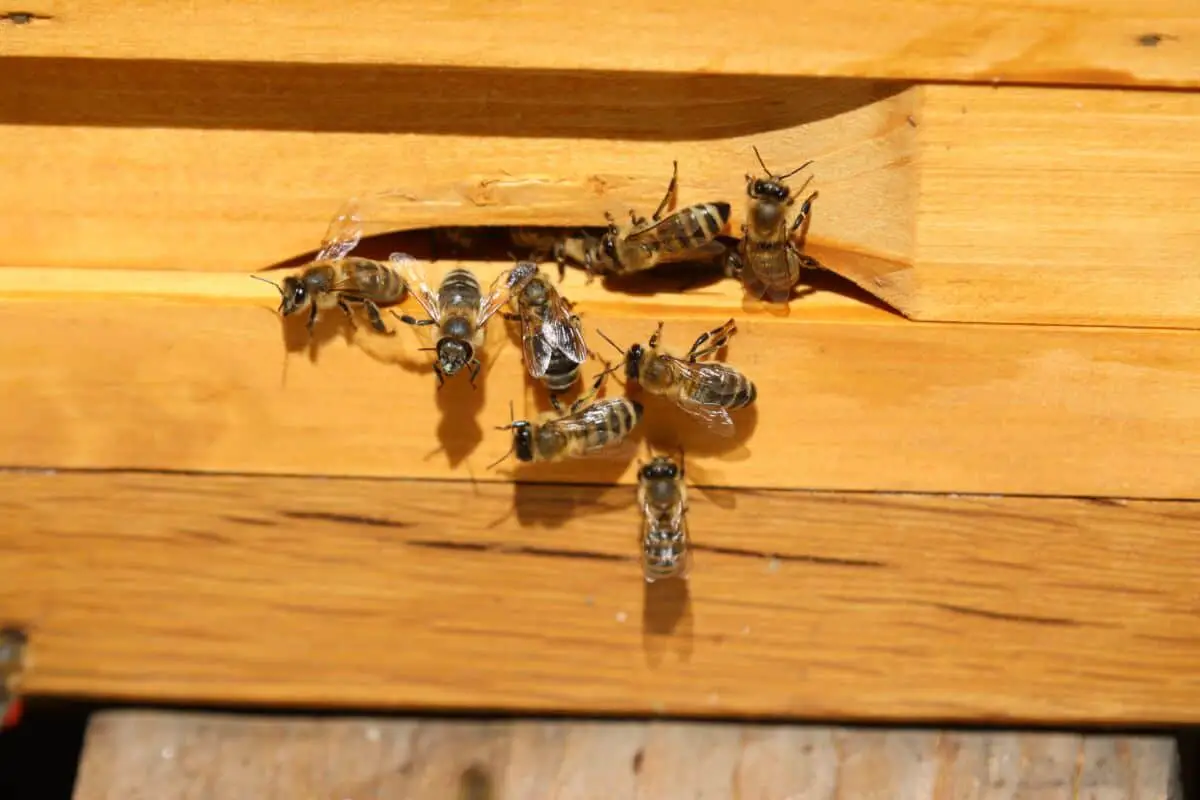Garden space has become a luxury in present times, especially in cities, where it is limited to apartments’ balconies. Even the prettiest of balcony gardens may seem dull without the buzz associated with pollinating insects and bees.
To attract bees to your balcony, have the right plants in place. Go native when choosing plants. Opt for a mix of flowering plants, perennial and seasonal, with cool-colored, nectar-rich flowers. Also, create a water source and shelter for visiting bees. Most importantly, avoid chemical pesticides.
Bees and other tiny insects add life to a garden, no matter what size. However, you may not be able to draw bees to a balcony or terrace gardens on high-rises. Read further to know more about making your balcony garden bee-friendly, while also keeping yourself safeguarded against bee attacks.
Making Your Balcony Garden Attractive to Bees and Other Insects
If you are planning for a small balcony garden or already have one, making it a favorite spot for bees and butterflies is bound to enhance its charm. Bees hopping from one flower to another, and colorful butterflies taking their turn to feed off the blooms in your garden make for a pretty picture.
You will be able to attract bees, butterflies, and a few other insects too by incorporating one or more of the tried and tested tips detailed below.
Use Native Plants
The appeal of exotic plants can be hard to ignore, but you may have to settle for local, preferably the non-hybrid species of plants bees and other insects are familiar with. Native plants are pollen-rich and produce more nectar than hybrid variants, making them attractive to the bee population.
If you still have a thing for exotic plants, limit their numbers. Some bee species have evolved to survive on pollen and nectar from non-native flora as well. If you are in luck, your balcony may soon be an active bee habitat.
Grow a Variety of Plants
The space constraints and the need to pot plants in containers, your choice is likely to be limited when working with a balcony garden. Don’t let that restrict you to just a couple of plant species. The more variety of plants in your garden, the more colorful and lively it becomes, not to mention, it also turns more irresistible for bees and butterflies.
Depending on how much space you have to spare on your balcony, you could grow a couple of vegetables, fruits, or herbs. Make sure to opt for flowering plants. You do have the choice to allow leafy vegetables, such as radish, shallot, and celery, to occasionally flower, to feed the bees.
Offer Water to Thirsty Bees
Bees and butterflies quench their thirst by sipping water from shallow sources, especially during the warm and dry seasons. Therefore, a water source is an integral part of bee habitats. You could place a bowl or a plate of water next to your plants on the balcony. Make sure you clean the container and fill it up at regular intervals.
Build a Bee Box
Between bouts of gathering pollen and feeding on nectar, even the most active bees prefer to rest occasionally. Some species settle on the shady ground right beneath the foliage, yet others sneak into holes in dead woods or even trees. For honeybees, you’ll need to build simple hollow structures and place them in the quieter parts of your garden.
Providing shelter for visiting bees is fine, but you may need to think twice before building a permanent home for bees on your balcony. Otherwise, you will find bees harbored right beneath your plant container, if you are using mulch to nurture your plants. If you are running short of mulch, consider this 11-pound FibreDust CoCo Mulch pack for extended use.
Do Not Use Bee-Repellent Pesticides
Pesticides may help protect your plants from pests that scavenge foliage, but some tend to repel bees too. Therefore, steer clear of chemical formulations, particularly the ones containing neonicotinoids.
As native plant species are usually resistant to pests and other infections, you may not need pesticides to keep them at bay. Instead, you could use natural fertilizers and pest repellents that aren’t detrimental to pollinating insects, bees, and butterflies. This shall ensure your garden does not turn into a toxic haven for these creatures.
Choose the Right Mix of Seasonal Flowering Plants
Flower-packed balcony gardens are a pleasure to behold. You’ll need to choose a mix of perennial and seasonal flowering plants if you want your garden to be colorful and lively all around the year. Perennial species have longer lifespans; they typically live for several years.
Seasonal plants burst into bloom when the climatic conditions are favorable. They typically wither out entirely when the environment is not right. If you are short on space, you could spruce up the garden regularly with seasonal flowers.
Not many flowers in the open survive cold and rains. If your balcony is covered, grow more plants that flower during the winter season so that the bees get a steady supply of food. Camellia, hellebore, winter jasmine, and cyclamen can brave winters without breaking a sweat.
Opt for Flowers With Just One Ring of Petals
Bees seem to prefer flowers with one ring of petals set around the center. These flowers are also known to be rich sources of nectar and pollen, unlike flowers with petals arranged in multiple layers. The structure of single petal flowers makes pollen and nectar more accessible than those with more complicated petal arrangements.
Grow More Plants With Cool Colored Flowers
Pollinating insects and bees are highly influenced by the size, shape, color, and structure of flowers. Bees are attracted to flowers and foliage that are bright, yet cool. White, blue, lilac, purple, pink, and yellow-colored flowers are likely to draw the maximum attention. You could throw in a couple of plants that grow dark color flowers to enhance the balcony’s visual appeal. But make sure they are strategically placed so that they don’t repel bees.
Nurture Plants in Patches and De-Weed Thoughtfully
While this may not apply to balcony gardens, growing flowering plants in patches or placing containers or pots next to each other enable bees to move from one flower to another as they feed easily. You may be surprised to learn that even common weeds such as dandelions and milkweed serve as food for bees and insects. If you are worried about weeds getting invasive, you could always prevent them from seeding.
Worried About Getting Stung by Bees?
A balcony garden abuzz with bees could be a cause for concern, as your likelihood of getting stung by bees goes up. The good news is that not all bees’ attack or sting. Most do not sting if they are left alone. Bumblebees, for instance, are known to be quite docile and peaceful. They only sting if you disturb their hive or invade their space.
If you do get attacked by bees, watch this video to learn how to treat the sting:
Even if a bee sting is not an issue, sharing your precious balcony garden with bees will be something you need to get used to. The constant buzz and activity can initially be quite unsettling. However, you would get used to the buzzing.
Conclusion
Did you know that honey bees play a pivotal role in food production? Over 70% of flowering plants depend on bees to propagate and thrive. By creating bee-friendly habitats, you help these active cross-pollinators survive hard times, while also adding life to your balcony garden. Luckily, attracting bees to your balcony garden may not be difficult as there are several thousands of bee species inhabiting the earth.

